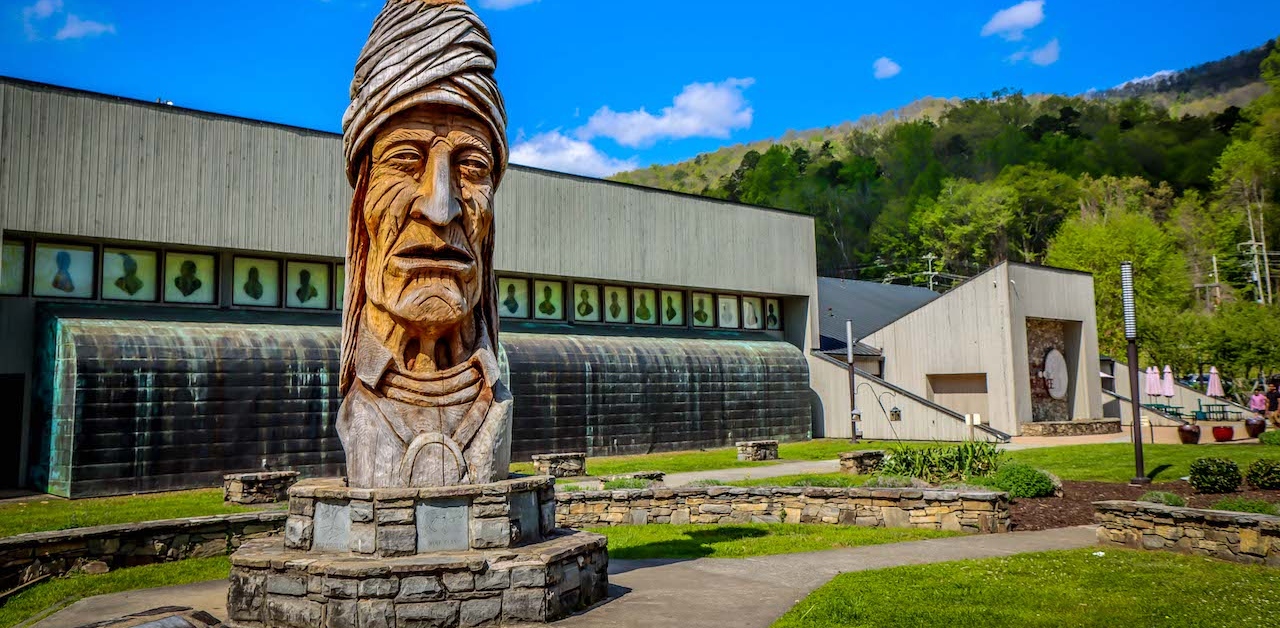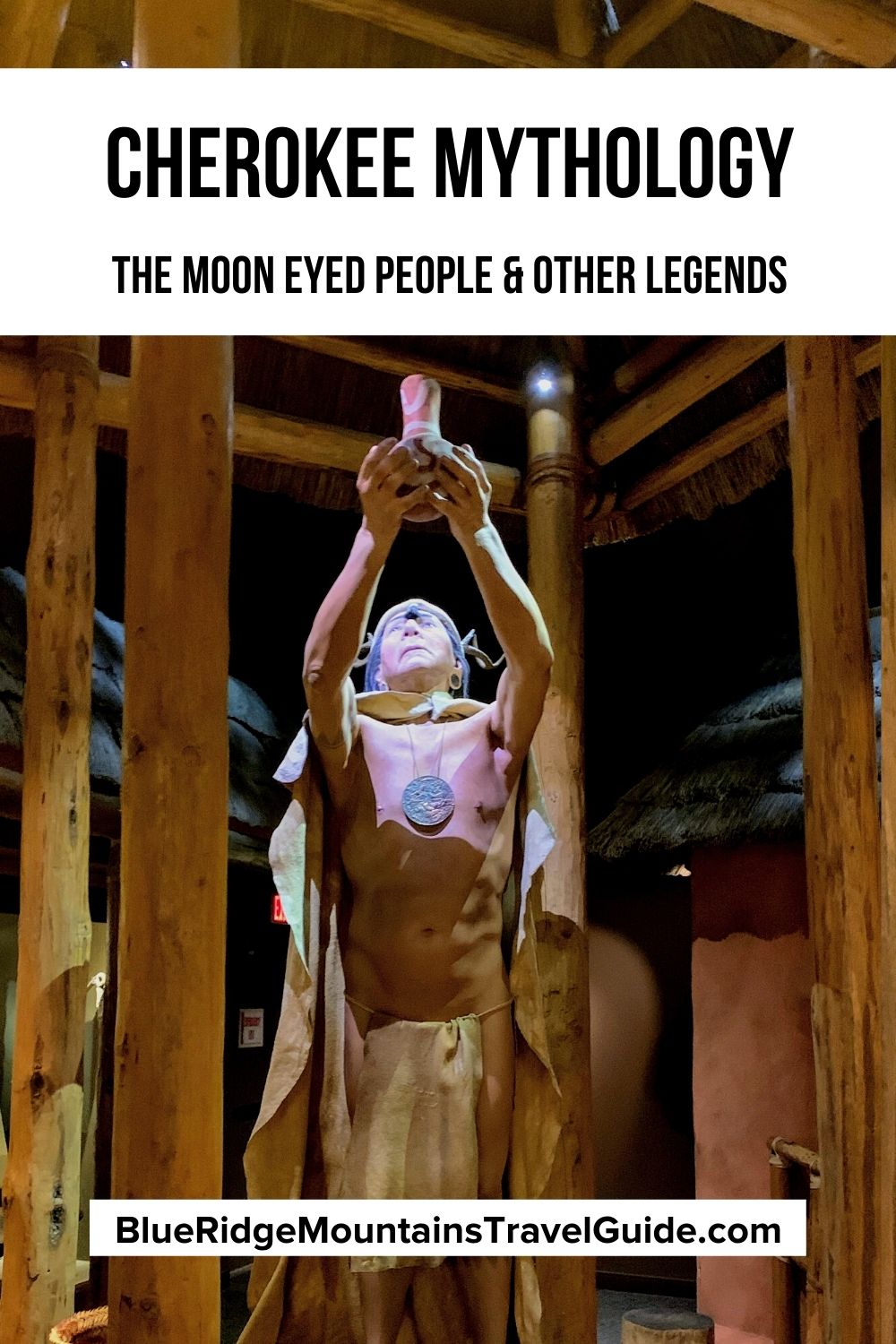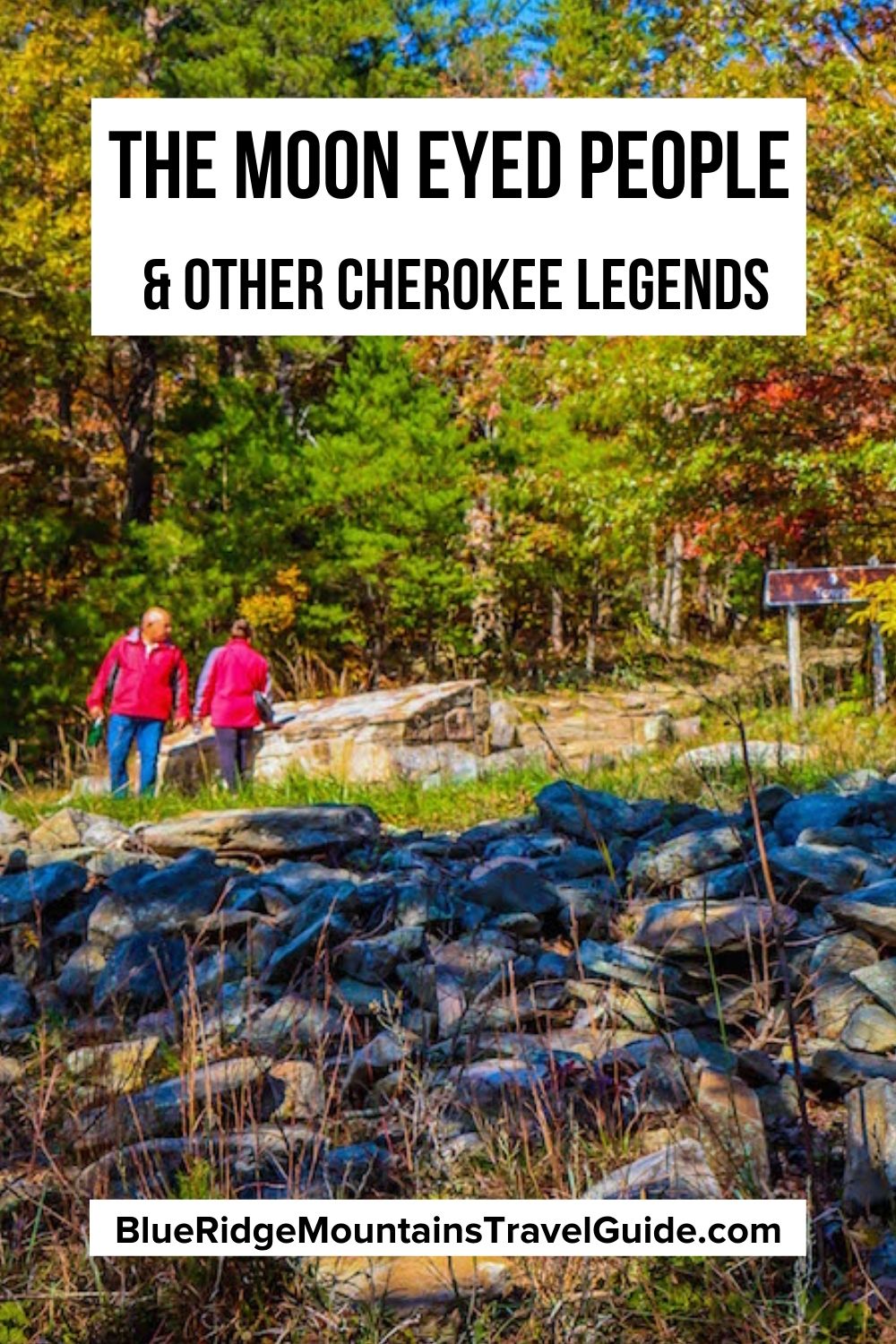When we explore the Blue Ridge Mountains, we’re lucky enough to get a chance to experience the rich culture of the Cherokee Indians.
The mountains offer a glimpse into their unique world, which is full of mythological stories and supernatural beings.
Many of the supernatural beings in Cherokee legends mingle with humans, or even part human. Many Cherokee stories describe supernatural animals who have helped to create the world we know today.
One of the most popular tales in Cherokee folklore is the story of the Moon-Eyed people of the southern Appalachian Mountains.
Stories about this mysterious race of pale people with blue eyes originated in parts of Tennessee, Georgia, and North Carolina. But the true origins of the Moon-Eyed people remains a matter of debate to this day.
Local landmarks such as Fort Mountain State Park (near Ellijay GA) and the Hiwassee River (whose headwaters are in Hiawassee GA) may help provide some insight into this unusual Cherokee legend.
READ MORE: 50 Fascinating Facts About Cherokee Culture & History
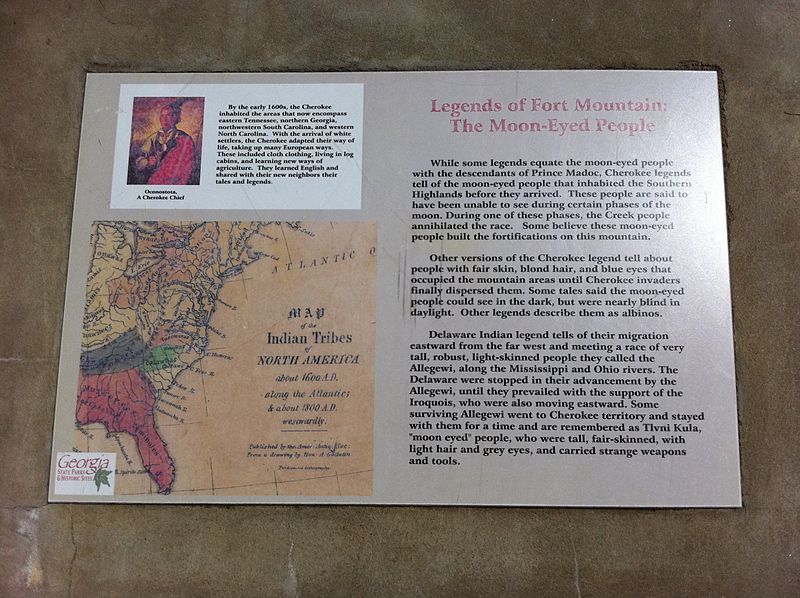
The Legend of the Moon-Eyed People
The Native American story of the Moon-Eyed people describes a race of pale-skinned humanoids with bearded faces and large blue eyes. They were said to be short, with small round bodies.
Legend describes them as a separate race of people, rather than the supernatural beings that are fairly common in Cherokee mythology.
Some historians believe that the Moon-Eyed people were simply early European settlers, but the stories of them date back to the time before the first pilgrims began to arrive.
According to ancient stories of the Cherokee people, their blue eyes were so sensitive to the sun that they were forced to be nocturnal, only coming out at night.
This is how they got the name “moon-eyed,” even though the light from the full moon was reportedly enough to make them flee underground.
They built caves underground to escape the light. Some stories also suggest that they built small huts made of logs and wood that were low to the ground.
According to legend, the Creek tribe came up from the South and invaded the territory of the Moon-Eyed People, which extended from the Little Tennessee River north to Kentucky, with stone fortifications along the borders.
The Creek waited until the full moon (when the Moon-Eyed folk would be at their weakest) to attack, and drove them from their caves.
The pale-skinned people ultimately fled west into the Smoky Mountains, never to be seen again.
READ MORE: Exploring the Dark History of the New Echota Historic Site in Calhoun GA

Fort Mountain State Park
Located just north of Ellijay GA, Fort Mountain State Park has long been associated with the Moon-Eyed People.
There are ruins of an 850-foot-long stone wall there that was said to have been constructed by them circa 400-500 CE.
When visiting the area in the early 1800s, Tennessee governor John Sevier spoke with Cherokee Chief Ocotosota about the wall. The Chief told him that the wall was first built by “the white men from across the great water.
The Moon-Eyed People are said to have experienced a lot of violence in their time in the Appalachian region.
They built fortifications like the one at Fort Mountain State Park all over their territory to keep out invaders that threatened their domain.
The wall, which measured up to 7 feet tall in some places, curves along the southeastern edge of the North Georgia mountain’s summit.
It is said to have been a fortification in the war between the Moon-Eyed people and the neighboring Creek nation.
Today, the wall is accessible by taking the Georgia State Park’s Summit Trail. The 1.5-mile hiking trail takes you by the stone wall, a CCC fire tower, and a breathtaking overlook of the Cohutta Wilderness.
READ MORE: The 16 Best Things to Do in Ellijay GA & Gilmer County

The Little Tennessee River
Many other ruins left by the Moon-Eyed people exist between the Little Tennessee River and Chickamauga Creek.
Various stone walls and structures still stand, offering a glimpse into the lives of the mysterious Cherokee little people.
Some versions of the story say that the Moon-Eyed people fled to the west to escape their war with the Creek Indians. One story even mentions that they could not go east, for fear of running into the Great Leech in Peachtree Creek.
But other versions of the legend suggest that the Cherokee Moon-Eyed people fled from the Hiwassee area of North Georgia and North Carolina, towards the Smoky Mountains and Little Tennessee River.
Some folks even claim that they still reside there, hidden from view, today.
In his 1823 book, The Natural and Aboriginal History of Tennessee, author John Haywood describes a Cherokee encounter with the “white people” on the Little Tennessee River.
He also describes the various weapons they had, such as axes and guns, indicating that they might have simply been white settlers.
According to Haywood, the Moon-Eyed people fled west from the Little Tennessee River, leaving western Tennessee and Kentucky for good.
READ MORE: The 10 Best Kayaking Rivers in Georgia
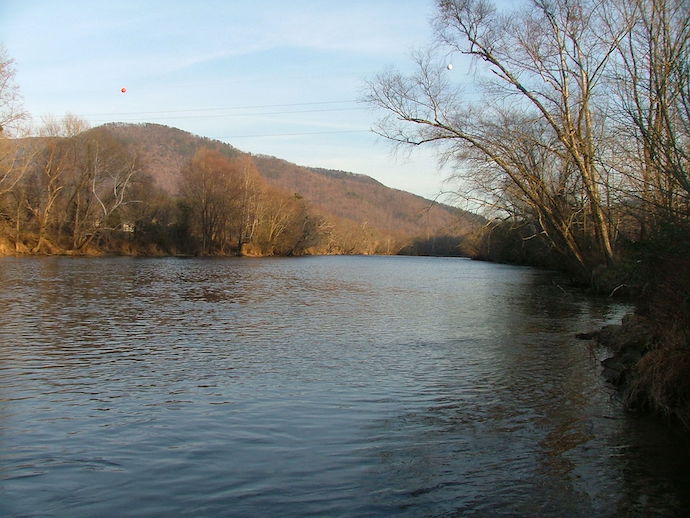
Hiwassee River
The Moon-Eyed people were also said to live north of the Hiwassee River, of which the Toccoa/Ocoee River in Blue Ridge GA and the Nottely River in Blairsville GA are major tributaries.
Two separate accounts by members of the Cherokee tribe describe the Hiwassee little people, who were very small, with perfectly white skin.
The area, which also includes Murphy NC, is likely where the Moon-Eyed people made their primary home.
The 147-mile river likely provided abundant water and food, while the surrounding Blue Ridge Mountains offered them plenty of places to find shelter from the light.
It wasn’t until their battles with the Creek tribe began that they were forced leave the area, fleeing away from the Hiwassee river into a more remote wilderness area.
READ MORE: The 15 Best North Carolina Mountain Towns to Visit
Other Cherokee Legends
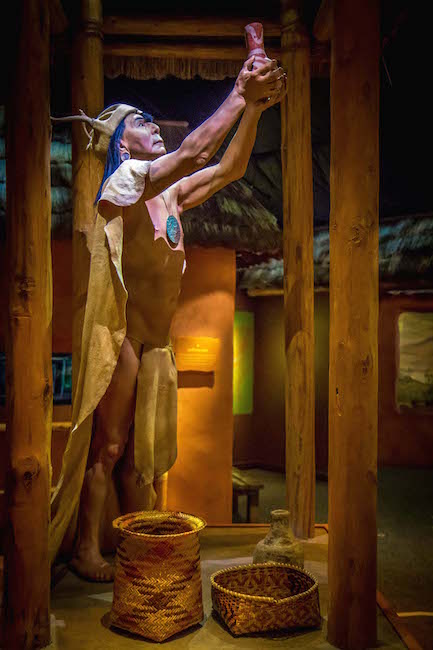
The Cherokee Creation Story
One of the most famous stories in Cherokee mythology, the Cherokee creation story tells about how all the animals originally made it to Earth.
At that time the Earth was a sea of water, suspended by a cord at each of the cardinal points– North, South, East, and West.
All of the animals living in the sky eventually began to feel crowded. So they started to discuss the possibility of moving to the sea world of Earth.
A little water beetle offered to explore the world first, hoping to find a place to rest.
The beetle didn’t initially find a good spot. So it dove down to the bottom and came back up with a soft mud, which quickly grew until it became a large island.
Then the creatures sent the Great Buzzard down to fly over their earth, and the beating of his wings formed the soft mud into mountains and valleys.
READ MORE: 20 Beautiful Birds of North Carolina

The Cherokee Rose Legend
The legend of the Cherokee Rose is also another popular legend in the Cherokee culture.
During the Trail of Tears, many women were afraid that their children would not survive to rebuild the Cherokee Nation. So they called upon the Heaven Dweller.
The Heaven Dweller spoke to them and told them to look back along the trail in the morning, where their tears had fallen.
In that spot would be a plant with seven leaves– one for each clan of the Cherokee.
In the middle of the plants would be a white rose with five petals and a pile of gold, which served as a reminder of the greed that forced them out of their homes.
The flowers allowed the women to forget their sadness, which gave them the strength to protect their children.
READ MORE: North Carolina Wildflowers Guide (& Where to See Them in Western NC)

The Cherokee Legend of the Two Wolves
Another famous Cherokee legend is the story of the two wolves.
This ancient Cherokee myth focuses on a grandfather who is telling his grandson about the two wolves within him.
He said that one wolf is evil, and embodies envy, greed, anger, and all the other negative emotions within him.
The other wolf is good, and represents the love, hope, and kindness in his heart.
These two wolves are constantly at war within every person’s body, symbolizing the struggle between good and evil that we each experience every day.
When the grandson asks which wolf will win, the grandfather responds, “The one that you feed.” –by Amy Lewis; lead photo of the Museum of the Cherokee People by Bret Love & Mary Gabbett

